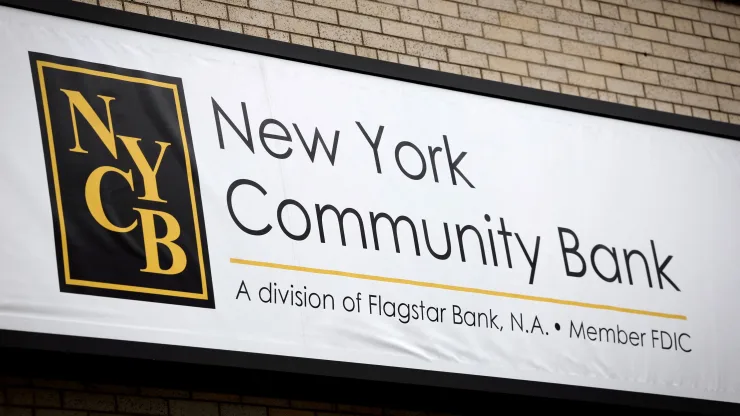Wall Street’s gaze has intensely focused on New York Community Bank (NYCB) as it navigates through a particularly stormy period, a stark reminder of last year’s banking turmoil. The regional lender’s shares took a significant hit, plunging 25% to fall below the $4 mark, sparked by a series of unsettling disclosures. These included a substantial restatement of recent quarterly earnings, leadership changes at the helm, and delays in crucial financial reporting. This suite of challenges underscores deepening worries about NYCB’s economic health, particularly regarding loan losses and deposit stability.
The precipitous drop in NYCB’s stock price was triggered when the bank announced a downward adjustment of $2.4 billion in its recent quarterly earnings, alongside a change in its CEO and a postponed annual report. Analysts and investors alike are particularly alarmed by NYCB’s admission of “material weaknesses” in its loan portfolio review process, pointing to potential long-term issues in credit costs, especially concerning its interest-only multi-family portfolio. Steve Moss of Raymond James articulated these concerns, highlighting the significant risks these disclosures pose.
In an ironic twist, NYCB, which had emerged seemingly stronger from the previous year’s banking crisis by acquiring assets from the seized Signature Bank, is now grappling with existential questions. This shift in fortune follows a disastrous fourth-quarter report, unexpected losses, and a downgrade by Moody’s to junk status, raising red flags over the bank’s risk management capabilities.
Despite the turmoil, NYCB attempted to reassure stakeholders of its stability, especially regarding its deposits, which it claimed remained robust as of early February. However, analysts remain skeptical, with Peter Winter from D.A. Davidson questioning the absence of recent updates on deposit levels, implying potential declines amidst the bank’s downgraded debt rating.
NYCB’s new CEO, Alessandro DiNello, has acknowledged the disclosed weaknesses and expressed commitment to a turnaround plan, emphasizing the bank’s solid liquidity and deposit base. Yet, the broader market response reflects heightened scrutiny and speculation about NYCB’s future, including the possibility of a sale given its stock’s dip below $5, a level Ben Emons from NewEdge Wealth notes often signals market perceptions of increased seizure risk.
The challenges facing New York Community Bank highlight the delicate balance regional lenders must maintain in a volatile financial landscape. As NYCB strives to navigate its current predicament, the banking sector and its observers are reminded of the fragility inherent in financial institutions’ risk management, especially in turbulent times. The unfolding situation at NYCB serves as a cautionary tale, underscoring the importance of robust oversight and transparent communication with stakeholders to maintain confidence and stability in the banking industry.






















